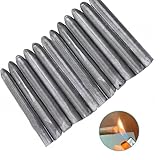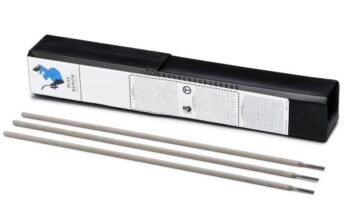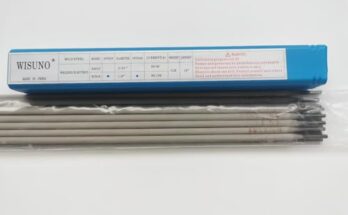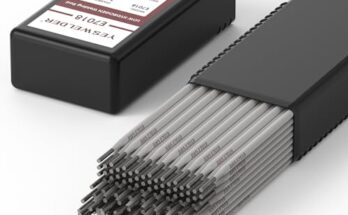Welding thin metal with a stick welder can be challenging, but it’s not impossible. If you’ve ever tried it, you probably know how easy it is to burn holes, warp the metal, or end up with weak welds. I’ve been there. It takes patience and the right technique, but once you get the hang of it, you can weld thin metal successfully with a stick welder.

Image by millerwelds
Most people assume stick welding is only for thicker materials, but with proper settings, electrode choice, and technique, you can weld sheet metal and other thin materials without ruining them. If you’ve been struggling with burn-through, warping, or poor weld quality, this guide will help you understand exactly what to do. Let’s go step by step and make welding thin metal with a stick welder easier.
Challenges of Welding Thin Metal with a Stick Welder
Before jumping into solutions, let’s first understand the main difficulties when welding thin metal with a stick welder.
- Burn-Through – Stick welding generates high heat, which can easily melt through thin metal.
- Warping and Distortion – Thin metal bends and twists when overheated.
- Spatter Issues – Stick welding naturally creates spatter, which can be more problematic on thin materials.
- Electrode Control – Keeping a steady hand and proper arc length is more difficult on thin metal.
To overcome these problems, you need to adjust your technique, settings, and electrode choice carefully.
Best Stick Welder Settings for Thin Metal
Getting the right settings on your stick welder is crucial when working with thin metal. Here’s what I recommend based on my own experience.
Recommended Stick Welder Settings for Thin Metal
| Electrode Size | Amperage Range | Metal Thickness | Polarity |
|---|---|---|---|
| 1/16-inch | 20-40A | 1/32 to 1/16-inch | DC- or AC |
| 3/32-inch | 40-75A | 1/16 to 1/8-inch | DC- or AC |
| 1/8-inch | 75-100A | 1/8-inch and up | DC+ or AC |
- Lower amperage prevents burn-through. Keep the setting on the low end for thin metal.
- Use DCEN (DC -) to reduce heat input if your welder allows it.
- Keep the arc as short as possible to maintain better control.
If you’re working with really thin sheet metal, you may need to experiment with 20-30 amps and a smaller electrode to avoid overheating.
Choosing the Right Electrode for Thin Metal
Not all welding rods work well for thin metal. Some rods penetrate too much, while others burn smoothly and create cleaner welds.
The best electrodes for welding thin metal are:
- 6013 – The best overall choice for thin metal. It creates a soft arc with less penetration, reducing burn-through risks.
- 7014 – Similar to 6013 but provides slightly stronger welds.
- 7018 – Good for structural strength, but not as easy to control for thin metal.
- 6011 (only if necessary) – If you’re working with dirty or rusty metal, 6011 can help, but it penetrates deeply, making it easier to burn through thin material.
For most situations, 6013 rods work best for thin metal because they provide a smooth, controlled weld without excessive penetration.
Best Techniques for Welding Thin Metal with a Stick Welder
Even with the right settings and electrodes, welding thin metal takes technique and control. Here are my go-to techniques that make the process much easier.
Use Short Welds (Tack Welding Method)
Instead of trying to run a long bead, use short tack welds. This helps control heat buildup and prevents burn-through and warping.
- Make a small tack weld every ½ to 1 inch along the joint.
- Let the metal cool slightly before adding the next weld.
- Once the whole joint is tacked, go back and connect the welds with small stitch welds.
Keep a Short Arc Length
A long arc increases heat and penetration, which is bad for thin metal.
- Keep the arc as short as the diameter of the electrode.
- A shorter arc gives better control, cleaner welds, and less spatter.
Whip and Pause Method
This technique helps control heat and penetration when welding thin materials.
- Move the electrode forward quickly and then pause briefly.
- This allows the metal to cool slightly before more heat is added.
- It creates a smooth, controlled weld bead without burning through.
Weld in Small Sections
Never weld the entire joint in one pass. Instead, weld in small sections to avoid overheating.
- Weld ½ inch, then stop and let the metal cool.
- Move to another section and repeat until the entire joint is welded.
How to Prevent Burn-Through and Warping
Thin metal is delicate, so it’s easy to melt through or warp. Here’s how to avoid that:
- Lower amperage – High heat burns through thin metal fast.
- Use a backing plate – Placing a piece of thicker metal behind the joint absorbs excess heat and helps prevent burn-through.
- Move quickly – If you stay in one spot too long, you’ll melt a hole.
- Let the metal cool – If it starts glowing red, stop and let it cool before continuing.
Common Problems and How to Fix Them
If you run into issues, don’t worry—I’ve dealt with them too. Here’s how to fix the most common problems.
| Problem | Cause | Solution |
|---|---|---|
| Burn-Through | Too much heat | Lower amperage, move faster, use a backing plate |
| Warping | Overheating | Use tack welds, let metal cool between welds |
| Excess Spatter | Long arc length | Keep the arc short |
| Weak Welds | Low penetration or wrong electrode | Use 6013 rods, maintain steady arc |
| Electrode Sticking | Low amperage or incorrect angle | Increase amperage slightly, keep electrode at 10-15° angle |
Conclusion
Welding thin metal with a stick welder takes practice and patience, but it’s absolutely possible. The most important things to remember are:
- Use low amperage and the right electrode (6013 is best for most situations).
- Keep the arc short and use small tack welds instead of long beads.
- Control the heat by using the whip-and-pause technique and welding in short sections.
- Prevent burn-through and warping by letting the metal cool between welds.
I’ve made plenty of mistakes while learning, but once I figured out how to control the heat and use the right technique, my welds improved a lot. If you’re struggling, keep practicing and adjusting until you get clean, strong welds.
Frequently Asked Questions (FAQs)
What is the best electrode for welding thin metal?
6013 electrodes work best because they produce a smooth arc with minimal penetration, which is perfect for thin metal.
Why does my stick welder keep burning holes in thin metal?
This usually happens because the amperage is too high or you’re moving too slowly. Try lowering the heat and using short welds.
Can I weld sheet metal with a stick welder?
Yes, but it’s tricky. Using low amperage, a 6013 rod, and short tack welds will give the best results.
How do I stop thin metal from warping while welding?
Use short tack welds, let the metal cool between welds, and weld in small sections to prevent excessive heat buildup.







